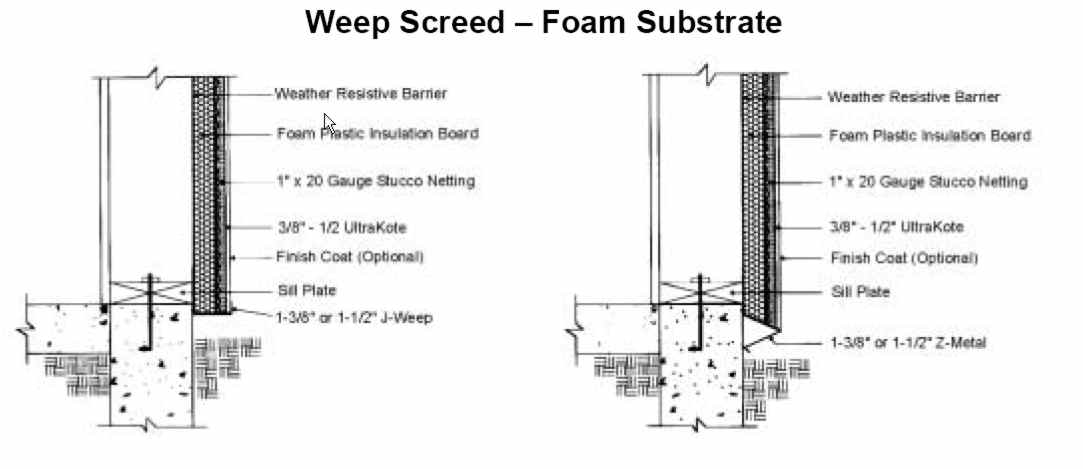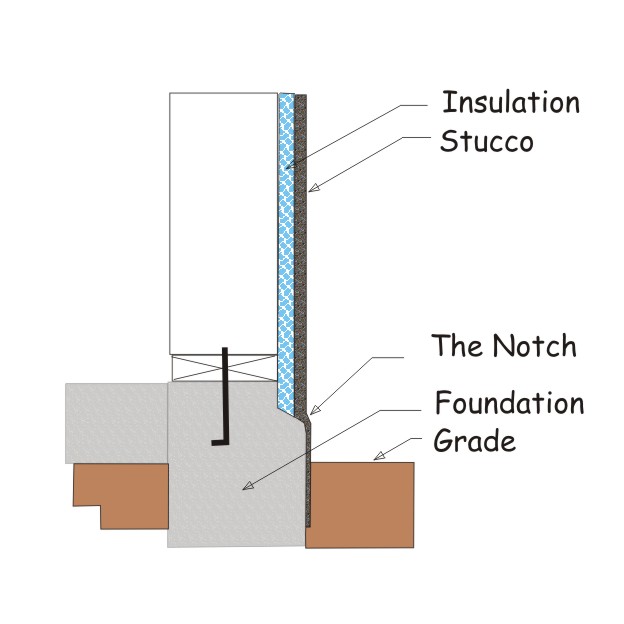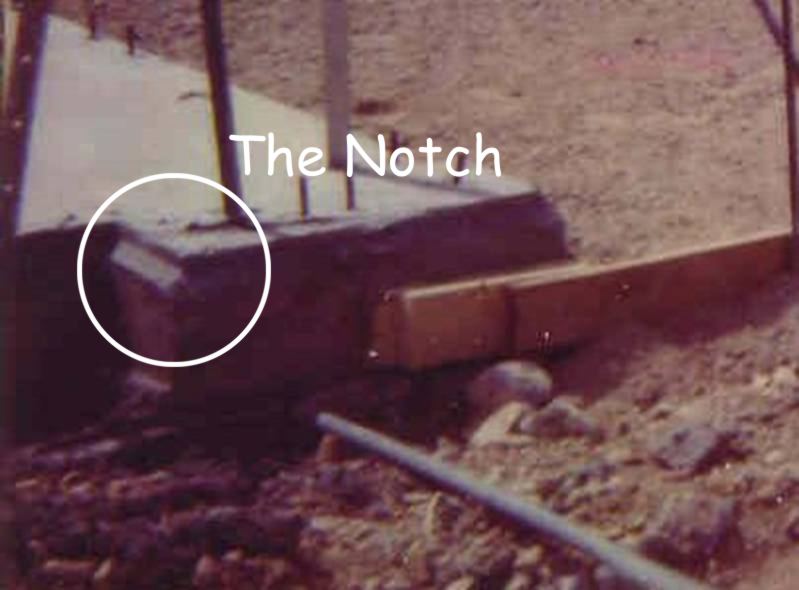
The system Del Webb chose to use in Sun City Summerlin was Ultrakote one coat over Dow Board. Dow board is a foam plastic board with a water resistant coating on each side. The system as described by Ultrakote was:

Del Webb chose a variant on this system which we think looks like this:
We are not completely sure how this was supposed to work. Seems as if it made a termination for the insulation and stucco but it does not appear to make any provision for draining the stucco air gap. There is also a rumor that a rectangular notch was also used though that should not change anything. What appears to have actually happened was:

Del Webb's plasterer extended the stucco below grade and filled over the notch with stucco. No obvious way for the stucco to "weep" and the possibility now exists for the stucco to wick moisture up from the earth.
Here is a picture of the "notch" on a home under construction in 1994:

From the available literature this would seem to have the potential for a really ugly outcome. Construction defect suits over such issues are numerous. The City of Woodbury paper offers a set of causes for moisture damage in stucco...
An excerpt from the Woodbury paper...
Q. What causes the problems?
A. Window leaks are the cause of the majority of the damage but the causes may be many, including:
- The paper around windows and other openings was installed incorrectly.
- Head flashing was not used on windows (windows with flanges were thought to be self-flashed).
- One layer of paper was used. Water may be leaking through the paper.
- The windows themselves leak.
- Kickout flashing was not installed at the wall/roof intersections where the roofline does not extend below the wall.
- The deck ledger board was not flashed.
- Moisture from rain during construction or wet building materials remain in the wall (construction moisture).
- Interior moisture is permeating into the wall.
- Lack of drying capacity. All walls will likely leak sometime during their life. In addition condensation and construction moisture will be in the walls. Stucco walls are very tight and cannot withstand much moisture without creating mold and rot.
- Solar drive may be pushing moisture from a wet stucco wall into the wall cavity.
- Type 15 felt may be acting as a vapor retarder trapping moisture in the wall.
- Oriented strand board (OSB) sheathing has a low perm rating and it may be acting as a vapor retarder creating a double vapor retarder situation. In addition OSB absorbs and retains moisture making it vulnerable to mold and rot.
- The staples that stick through the sheathing are collecting frost or condensation and dripping within the wall cavity.
- The high number of staples used to fasten the lath creates many penetrations that could both leak and condense moisture.
- The staples were driven into the lath with excessive force causing the lath to cut the paper creating a leak.
- Wind driven water is getting on the wall through the soffit vents and running down the wall between the sheathing and the paper.
- Weep screeds were not used at the bottom of the stucco. This may prevent trapped water from draining.
- Stucco was installed below ground. This may prevent trapped water from draining or may wick water up to the framing. In addition, when stucco is applied below grade there is no clear definition of where grade should be and often the grade is placed against the wood framing causing a guaranteed rot situation.
- Stucco is installed directly on the foundation without paper or a weep screed. This prevents trapped water from draining.
- Landscape trees or bushes that contact the stucco create an area that introduces and holds moisture in the stucco. The moisture permeates into the wall.
Note that a subset of these causes apply to the Del Webb installation. Woodbury also however provides some indication of the incidents of stucco problems. They suggest that up to half the homes will show problems in 10 years. It appears clear however that the prevalence of the problem in Sun City Summerlin is orders of magnitude lower. There are some known occurrences but they have not yet risen to 1% of the homes...and with more than 100,000 home years they should have.
so how in the heck did Del Webb do it so badly and yet nothing bad happened?
Well on to How Del Webb avoided a train wreck.